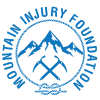Living with mountain injuries
Physical rehabilitation, psychological support, social networks, adaptation, and resilience are all crucial parts of recovery
Living with mountain injuries can be difficult and life-changing. These injuries can have a substantial impact on one's mental, social, and physical health, whether they are the aftermath of a climbing or any other mountain-related accident. We will look at the physical rehabilitation process, psychological impacts, social support systems, and the possibility of adaptability and resilience while living with mountain injuries.
Physical Rehabilitation: Mountain injuries often result in fractures, sprains, strains, dislocations, and, in severe cases, spinal cord injuries. Individuals with mountain
injuries must undergo physical rehabilitation to regain mobility, strength, and functionality. Rehabilitation may include physiotherapy, occupational therapy,
and other specialist treatments, depending on the nature and severity of the injury.
Physical rehabilitation generally begins with an evaluation of the injury and the development of a personalized treatment plan. This approach may include range of motion exercises, strength training, balance and coordination exercises, and activities to restore functional abilities. The process can be physically demanding as well as challenging, requiring the individual's patience, endurance, and determination.
While physical rehabilitation aims to restore physical abilities, it is critical to understand that some injuries may result in long-term or permanent medical conditions. In these kinds of instances, the emphasis of rehabilitation shifts to maximizing independence, adapting to limitations, and picking up new daily living strategies. Crutches, wheelchairs, or prosthetic limbs are examples of assistive devices that can be used to improve mobility and participation in a variety of activities.
Psychological Consequences: Living with mountain injuries can have serious psychological consequences. Coping with the aftermath of an injury often involves dealing with physical pain, functional limitations, and a disruption in one's previous way of life. Individuals may experience a wide range of emotions, including grief, anger, frustration, sadness, and even fear of going back to pursuing mountain activities.
Psychological support and counseling are critical in assisting individuals with navigating the emotional challenges associated with mountain injuries. Therapists can provide a safe environment for people to express themselves, process their trauma, and develop coping strategies. Cognitive-behavioral therapy (CBT) can help people reframe negative thoughts, manage anxiety, and build resilience.
Peer networks and support groups can also provide valuable emotional support and a sense of belonging. Connecting with others who have suffered similar injuries can help foster a sense of community, empathy, and comprehension. Sharing stories, exchanging advice, and offering encouragement can all help people on their path to acceptance and healing.
Social Support Systems: Having a strong social support system is often required when living with mountain injuries. Friends, family, and loved ones can provide emotional support, help with daily tasks, and assist in the overall adjustment process. Little things like performing tasks, providing transportation, or simply listening can have a significant impact on the life of someone who has been injured.
Furthermore, healthcare professionals such as physiotherapists, occupational therapists, and social workers can contribute significantly to the support system. They can provide guidance, expertise, and resources to help with the recovery process. Individuals suffering from these injuries can also benefit from resources, workshops, and educational programs provided by rehabilitation centres, specialized clinics, and community organizations. Living with a mountain injury often necessitates adapting to new circumstances and finding ways to participate in activities that bring joy and fulfilment. This could include looking into different hobbies, sports, or outdoor activities that are compatible with one's physical abilities.
Adaptation extends to the physical environment as well. Living spaces that have been modified to accommodate accessibility needs, such as ramps and grab
bars, can improve independence and mobility.
Along with adaptation, resilience is an important aspect of living with such injuries. The ability to recover from adversity, persevere in the face of difficulties, and maintain a positive outlook is referred to as resilience. Meditation with mindfulness, and developing a growth mindset are all practices that can help build resilience.
Ultimately, living with mountain injuries necessitates a holistic strategy that addresses the physical, emotional, and social aspects of recovery. Physical rehabilitation, psychological support, social networks, adaptation, and resilience are all crucial parts of recovery. While the road to acceptance and healing can be difficult, it's important to remember that people who have suffered these injuries can live fulfilling and meaningful lives with the right support systems in place. Individuals with mountain injuries can overcome their challenges and embrace new opportunities for growth and fulfilment through determination, perseverance, and a willingness to adapt.

